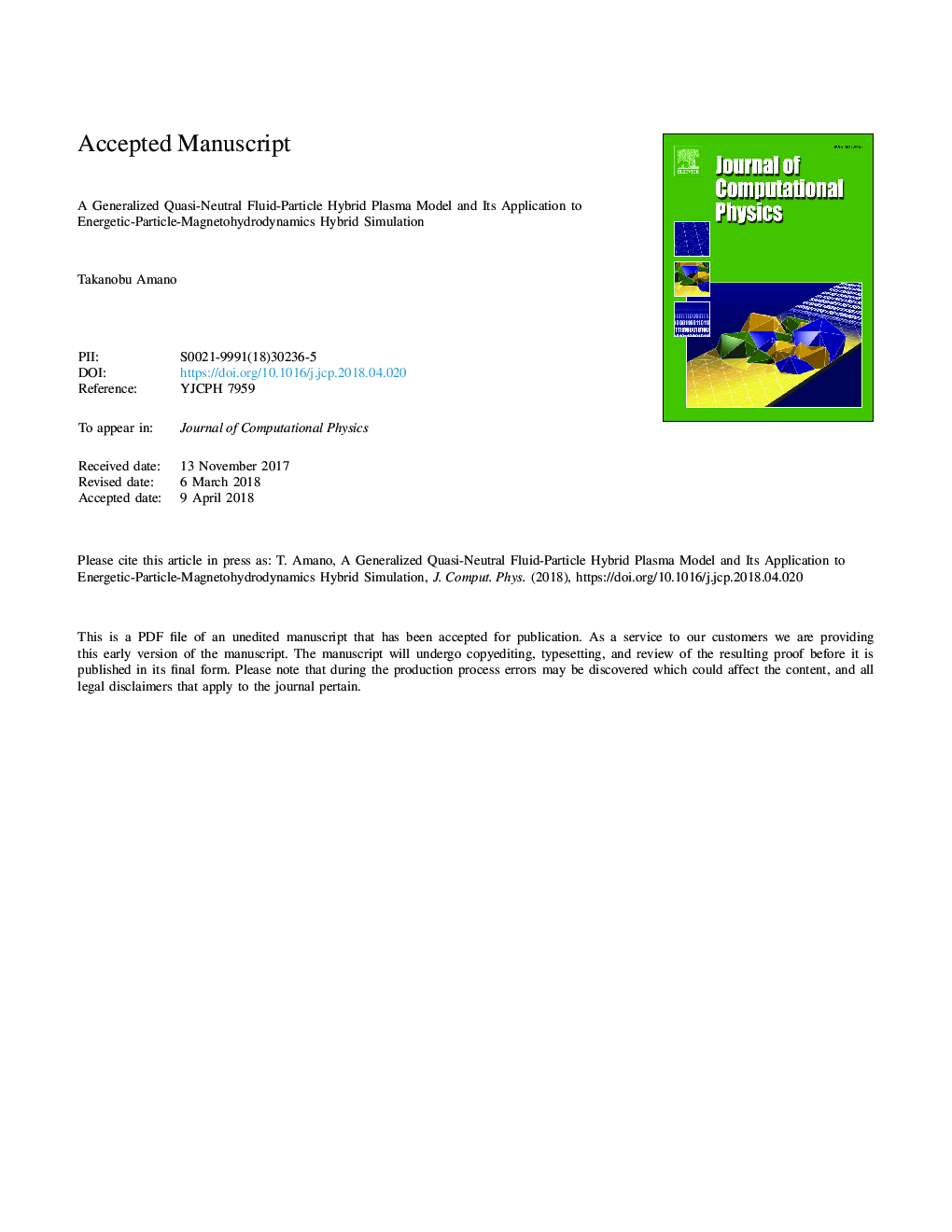| کد مقاله | کد نشریه | سال انتشار | مقاله انگلیسی | نسخه تمام متن |
|---|---|---|---|---|
| 6928841 | 1449347 | 2018 | 29 صفحه PDF | دانلود رایگان |
عنوان انگلیسی مقاله ISI
A generalized quasi-neutral fluid-particle hybrid plasma model and its application to energetic-particle-magnetohydrodynamics hybrid simulation
ترجمه فارسی عنوان
یک مدل پلاسمای هیبرید مایع شبه غیر ضروری تعمیم یافته و کاربرد آن در شبیه سازی هیبرید مغناطیسی-مغناطیسی پر انرژی
دانلود مقاله + سفارش ترجمه
دانلود مقاله ISI انگلیسی
رایگان برای ایرانیان
کلمات کلیدی
موضوعات مرتبط
مهندسی و علوم پایه
مهندسی کامپیوتر
نرم افزارهای علوم کامپیوتر
چکیده انگلیسی
A generalized fluid-particle hybrid model for collisionless plasmas under the assumption of quasi-neutrality is presented. The system consists of fluid ions and electrons as well as arbitrary numbers of species whose dynamics is governed by the Vlasov equation. The proposed model is thus a generalized version of the well-known standard hybrid plasma simulation model, in which the ions are fully kinetic whereas the electrons are assumed to be a fluid. Since the proposed model employs the exact form of the generalized Ohm's law, the mass and energy densities, as well as the charge-to-mass ratio of the kinetic species, are taken to be arbitrary. In the absence of the kinetic species, it reduces to the quasi-neutral two-fluid model [1]. In the opposite situation where the mass and energy densities of the kinetic species are much larger than the fluid ions, it is nothing more than the standard hybrid model with finite electron inertia effect. If the kinetic species is an energetic particle (EP) population having negligible mass density but substantial energy density and the scale size is much larger than the ion and electron inertial lengths, it describes the self-consistent coupling between the magnetohydrodynamics (MHD) and the EP dynamics. The energetic-particle-magnetohydrodynamics (EP-MHD) hybrid model is thus a special case of the more general model described in this paper. Advantages of this approach over the existing models are discussed. A three-dimensional simulation code solving the proposed set of equations is described. The code combines the Particle-in-Cell scheme for solving the kinetic species and a Riemann-solver-based code for the two-fluid equations. Several benchmark simulation results are shown to confirm that the code successfully captures the dynamics of the EP population interacting self-consistently with the MHD fluid.
ناشر
Database: Elsevier - ScienceDirect (ساینس دایرکت)
Journal: Journal of Computational Physics - Volume 366, 1 August 2018, Pages 366-385
Journal: Journal of Computational Physics - Volume 366, 1 August 2018, Pages 366-385
نویسندگان
Takanobu Amano,
